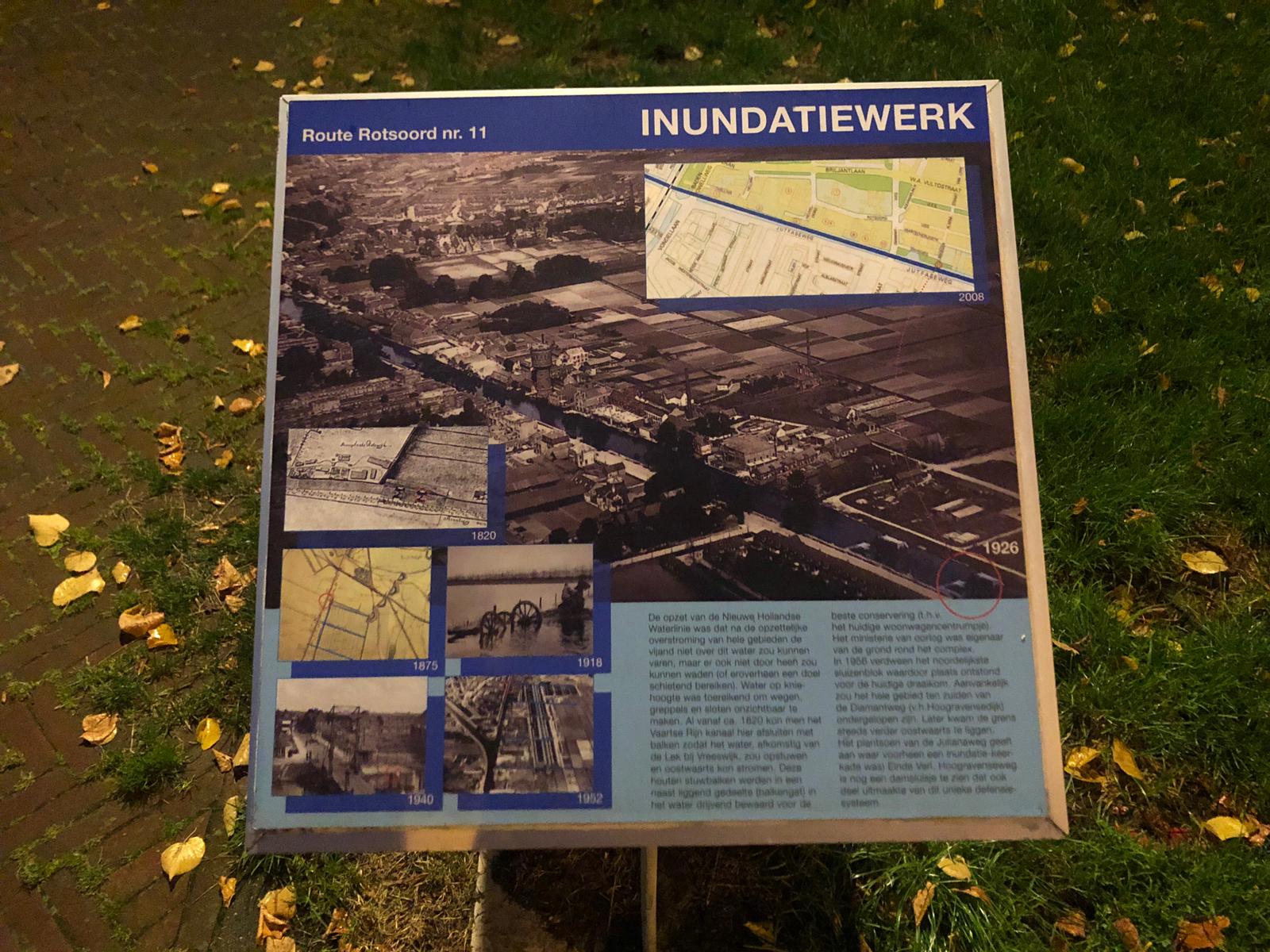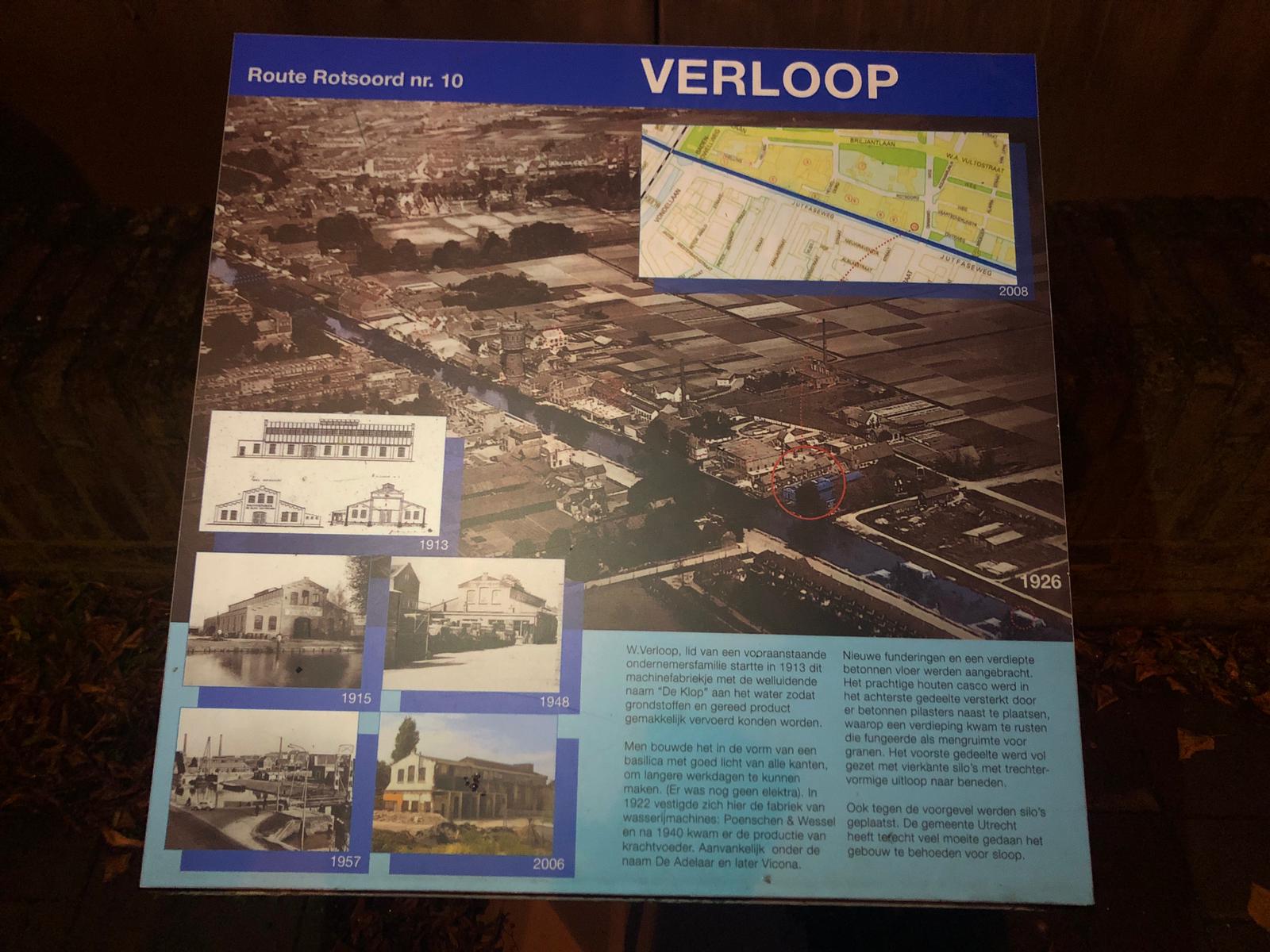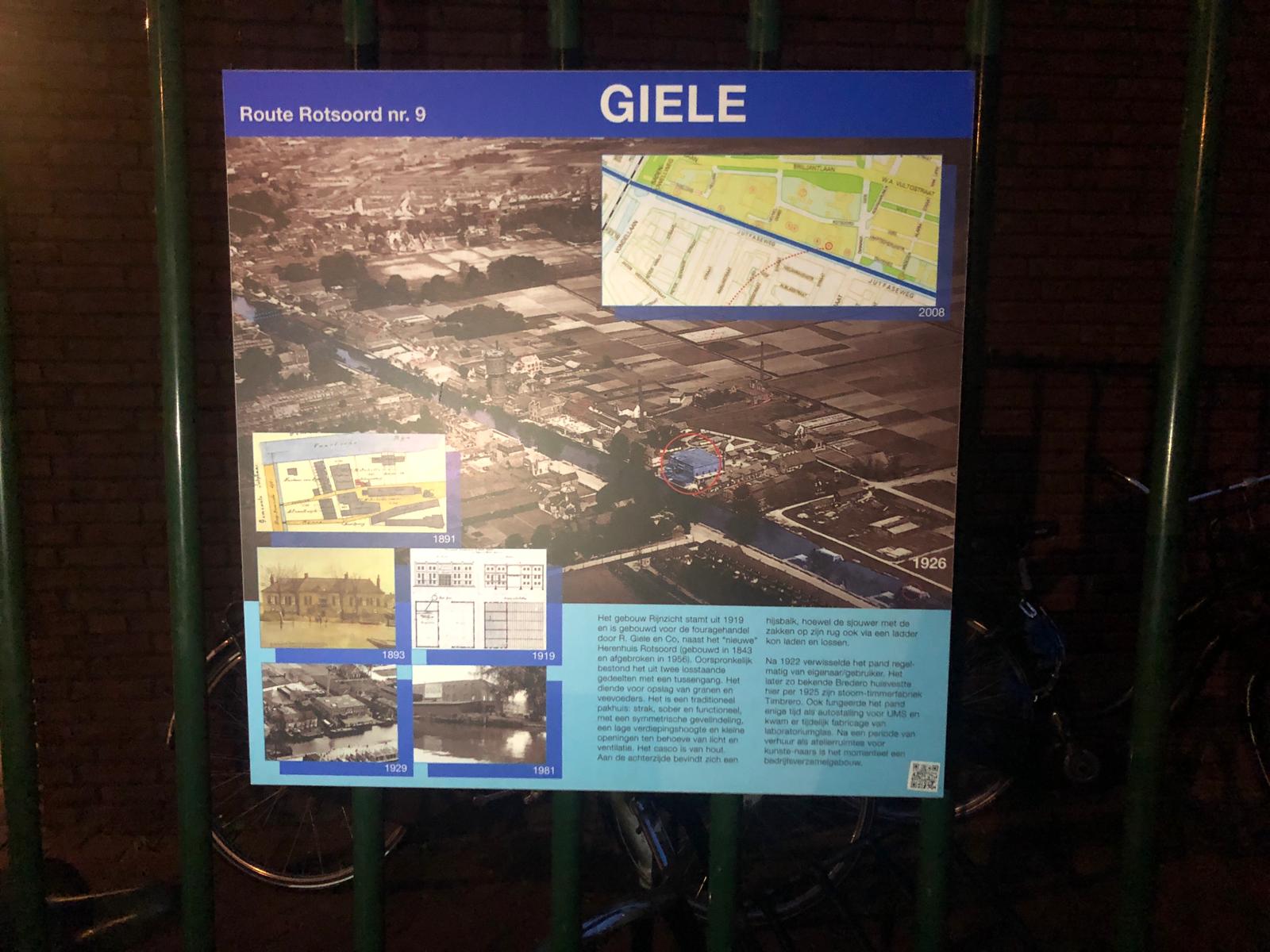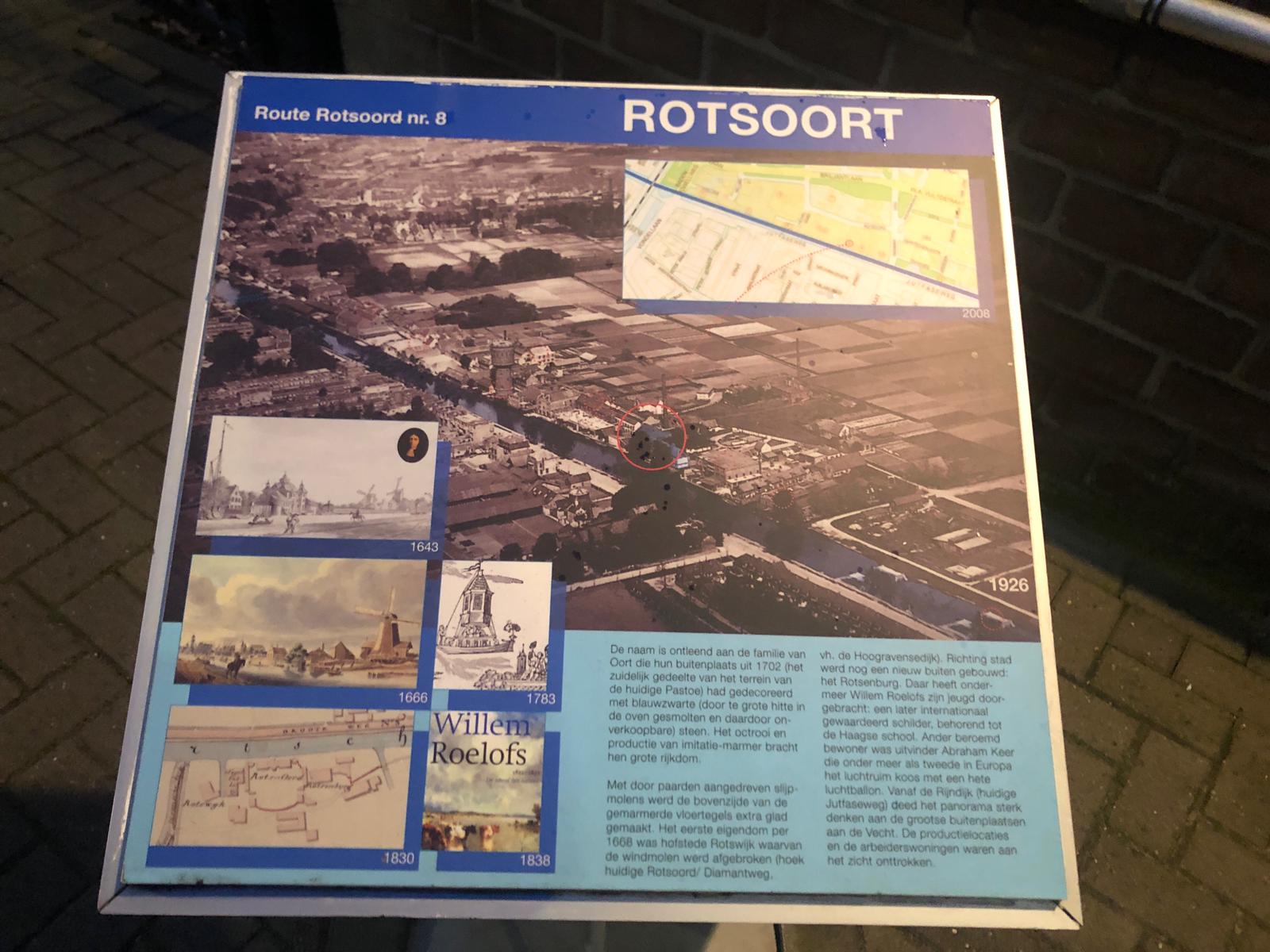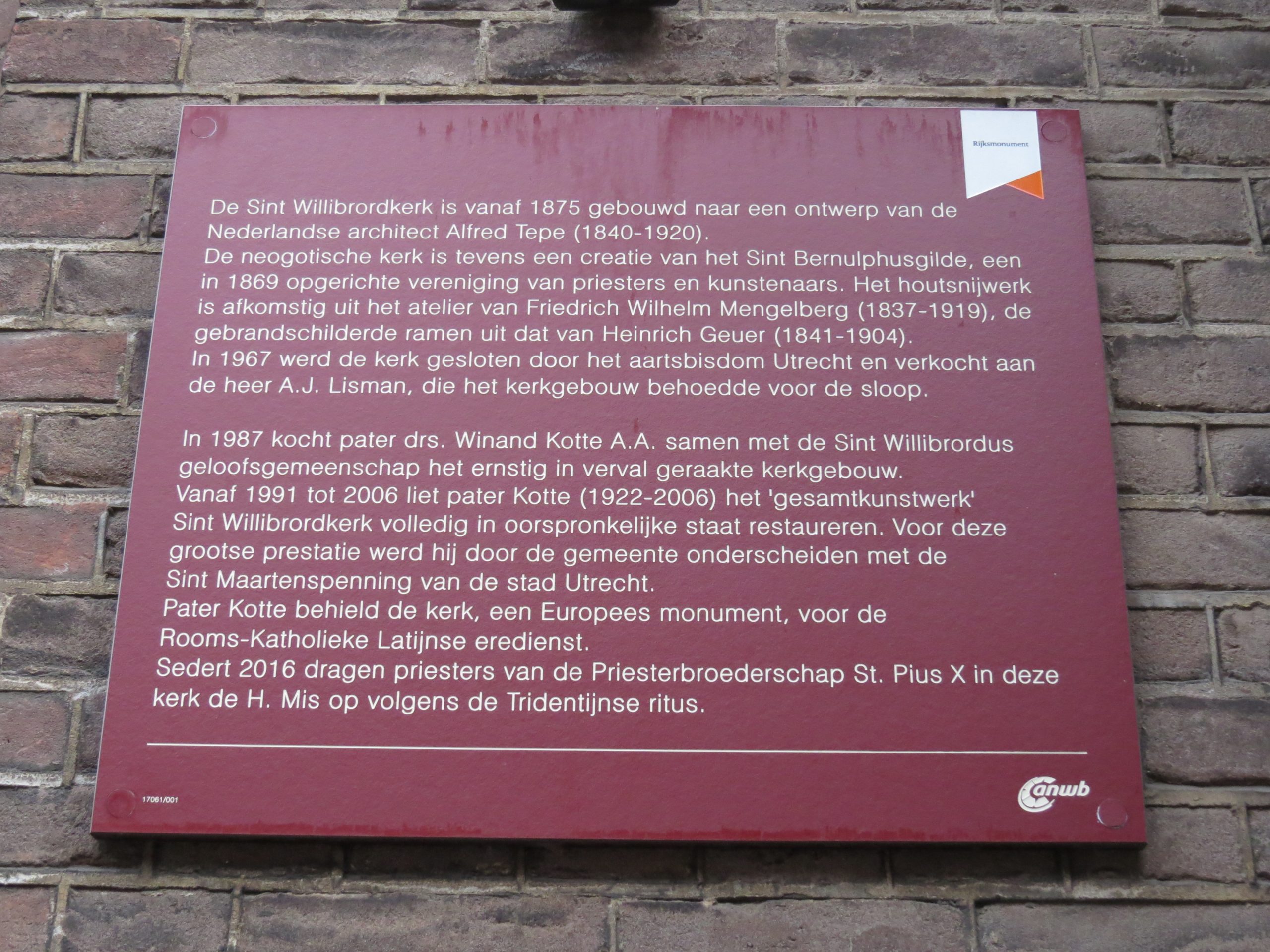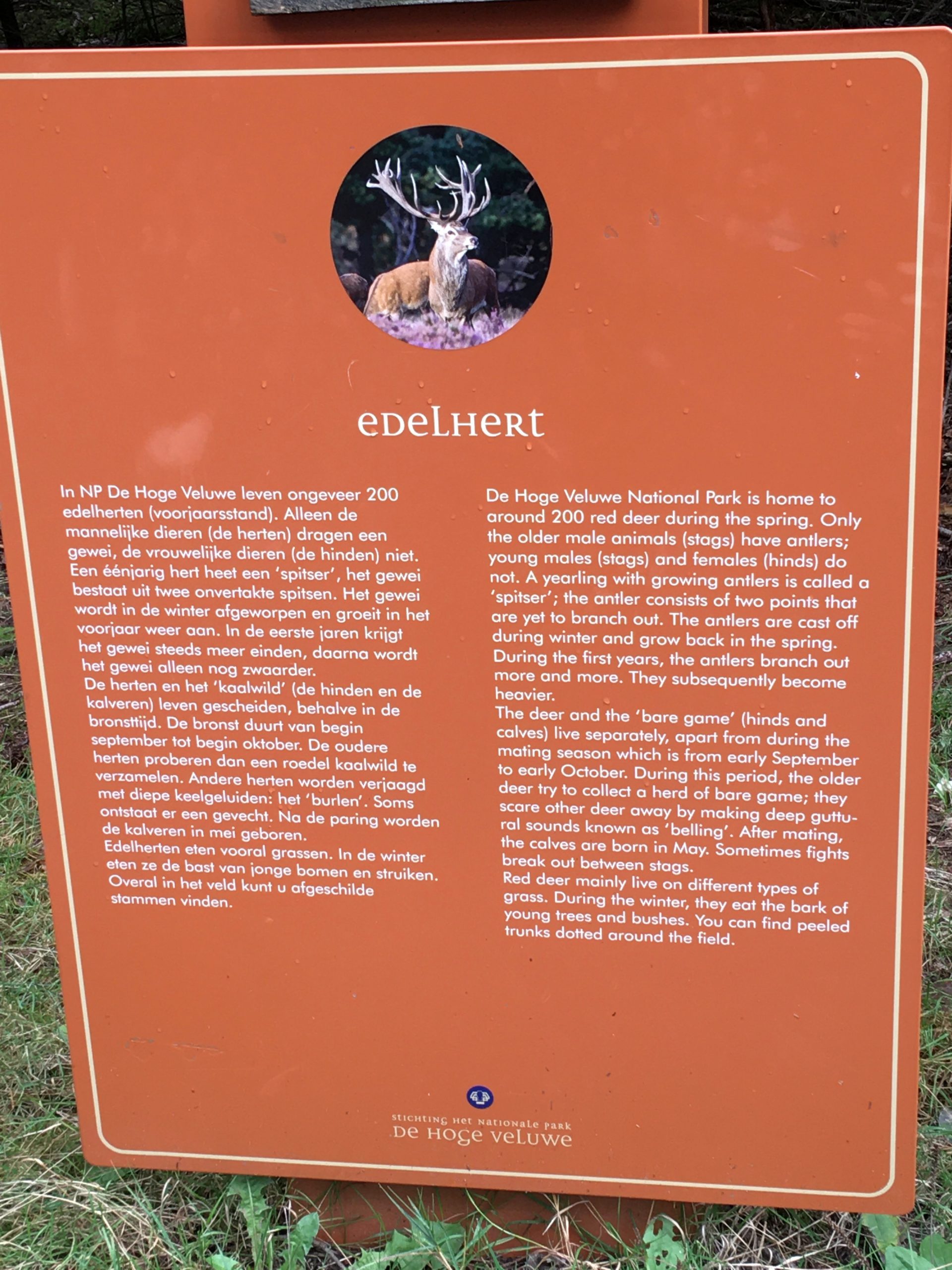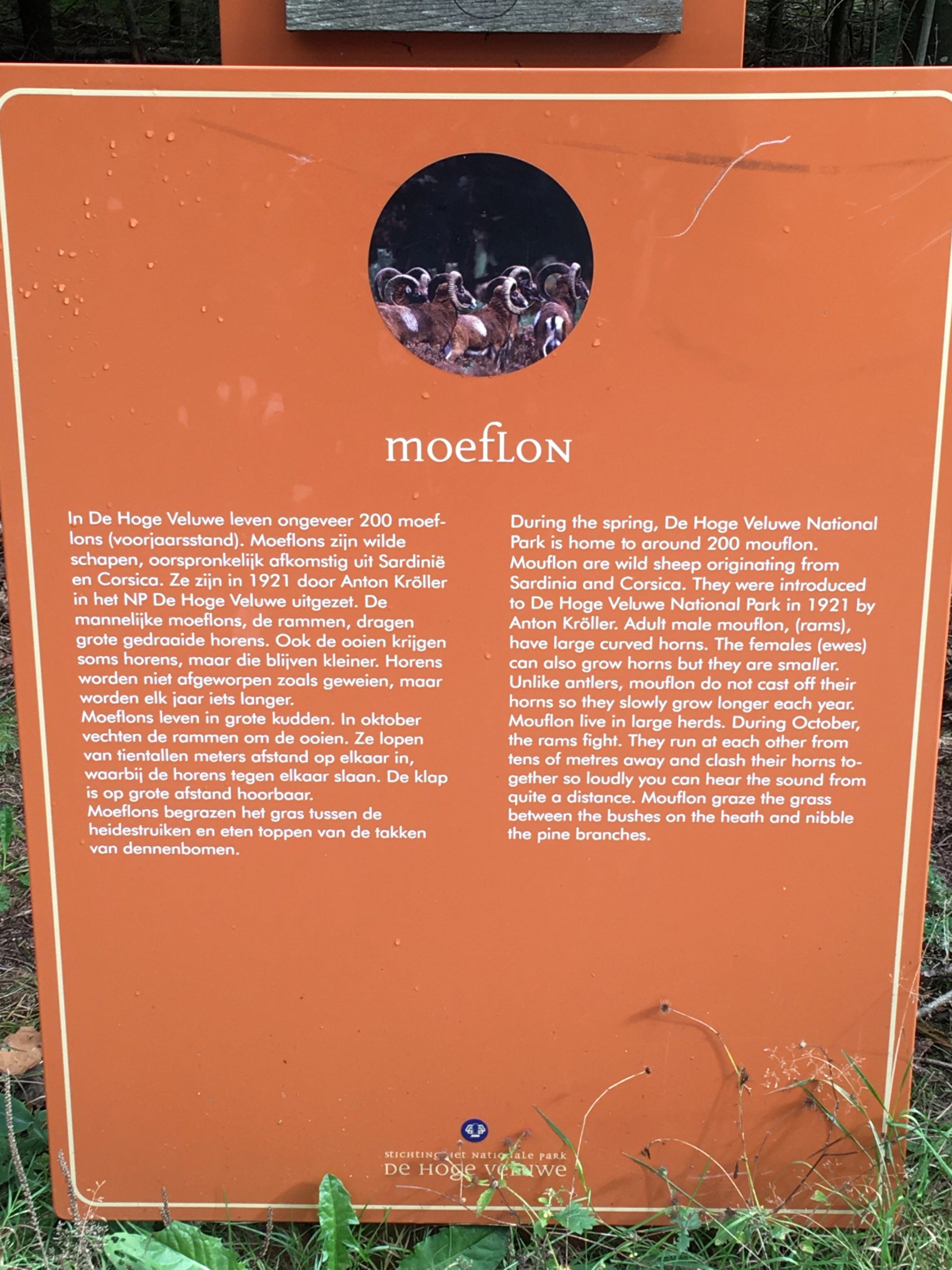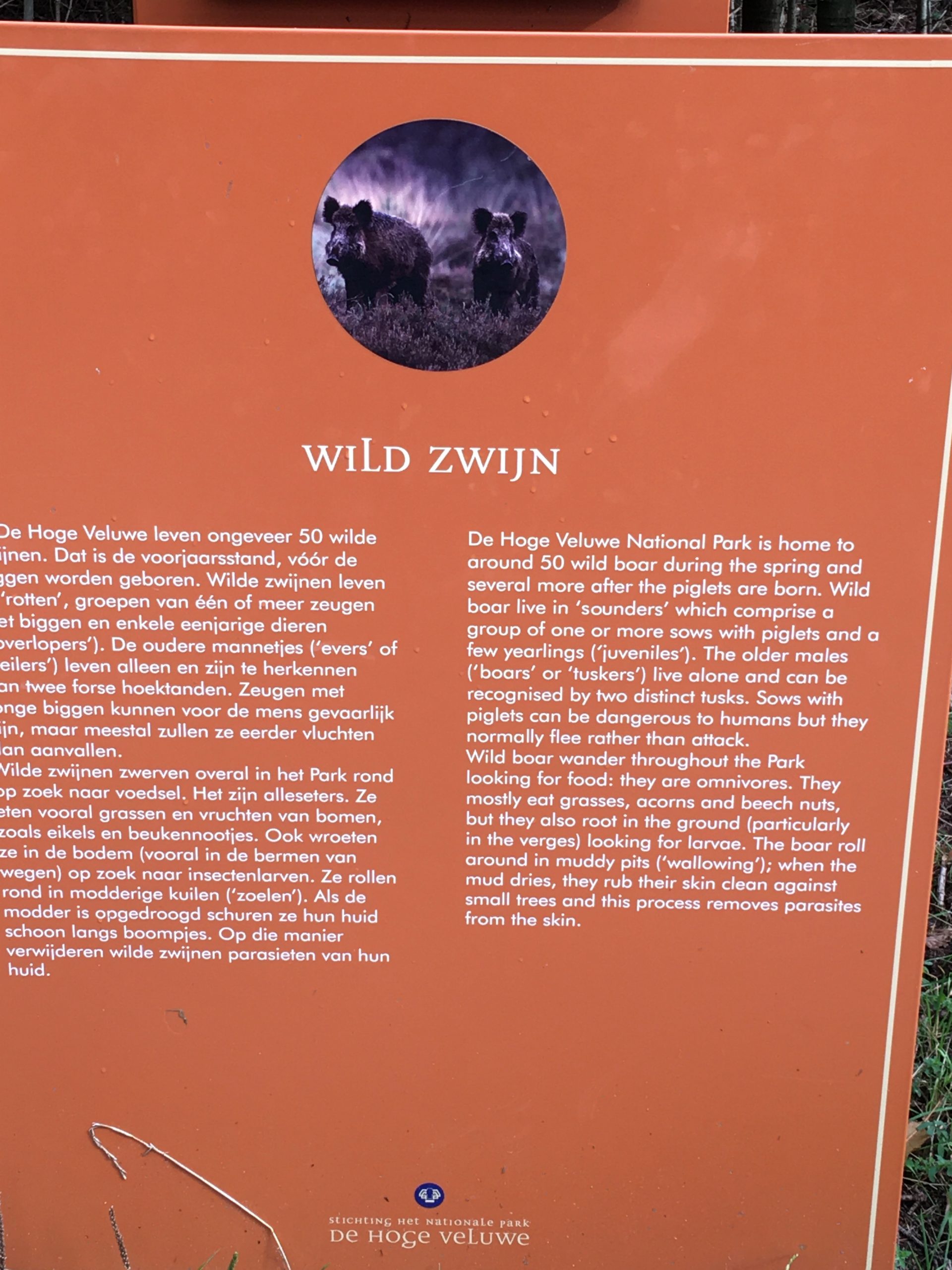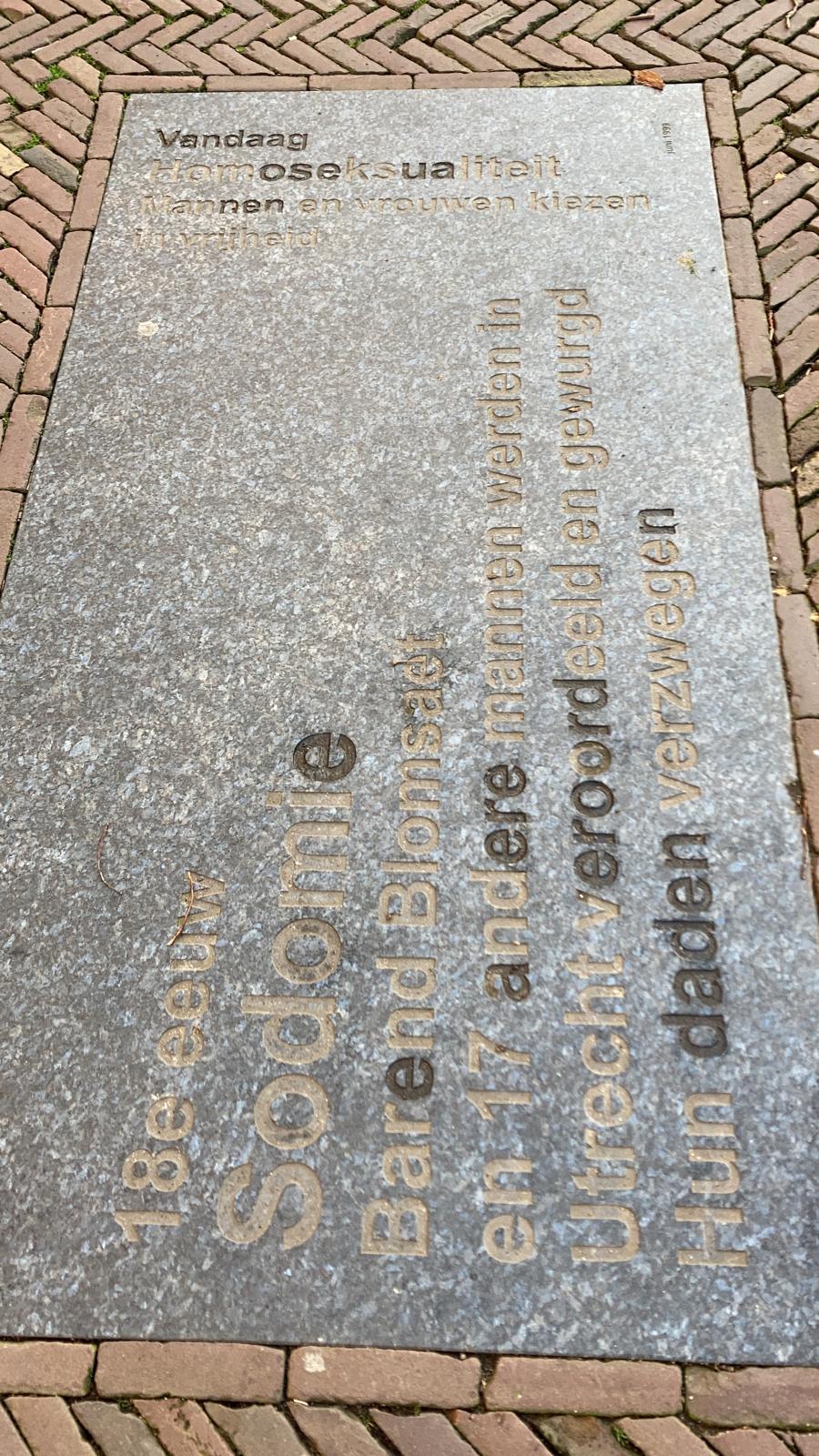The Rietveld Schröder House was the former residence of Miss T. Schröder (1889-1985). It was built in 1924 by Gerrit Th. Rietveld (1888-1964) in close cooperation with her and according to the principle of De Stijl. She lived here until her death. At the end of 2000, UNESCO placed it on the World Heritage list […]
Route Rotsoord no. 11 – Inundation Works
The idea behind the New Dutch Waterline was to intentionally flood a large area of land. As a result the enemy would not be able to sail on, wade through or shoot over the flooded area. To raise the water to a knee-high level was already sufficient to hide all roads, trenches, ditches and small […]
Route Rotsoord no. 10 – Verloop
W. Verloop, member of the prominent entrepreneurial family, started this machine factory in 1913, naming it the fitting “De Klop”. It was placed next to the water in order for raw materials and finished product could easily be transported. The factory has been build in the shape of a basilica with plenty of light from […]
Route Rotsoord no. 9 – Giele
The Rijnzicht building dates from 1919 and was build next to the “new” manor Rotsoord (built in 1843 and taken down in 1956) for the forage trade by R. Giele & Co. Originally, Rijnzicht consisted of two separate buildings with a passage. It served for storage of grains and fodders. It is a traditional warehouse, […]
Route Rotsoord no. 8 – Rotsoort
The name Rotsoort is derived from the family name Van Oort, who had their country house (built in 1702 on the souther parts of the current Pastoe grounds) decorated with blue-black stone. The blue-black stone was melted too hotly in the oven and was therefore unsaleable. The patent and production of imitation marble gave them […]
St. Willibrord Church
The built of the Saint Willibrord Church in Utrecht was initiated in 1875, by design of the Dutch architect Alfred Tepe (1840-1920). The neo-gothic church is also a creation of the Saint Bernulphus guild, an association founded in 1869 consisting of priests and artists.The woodcarving has been made in the studio of Friedrich Wilhelm Mengelberg […]
Red Deer on De Hoge Veluwe
De Hoge Veluwe National Park is home to around 200 red deer during the spring. Only the older male animals (stags) have antlers; young males (stags) and females (hinds) do not. A yearling with growing antlers is called a ‘spitser’; the antler consists of two points that are yet to branch out. The antlers are […]
Mouflon on De Hoge Veluwe
During the spring, De Hoge Veluwe National Park is home to around 200 mouflon. Mouflon are wild sheep originating from Sardinia and Corsica. They were introduced to De Hoge Veluwe National Park in 1921 by Anton Kröller. Adult male mouflon (rams) have large curved horns. The females (ewes) can also grow horns but they are […]
Wild Boar on De Hoge Veluwe
De Hoge Veluwe National Park is home to around 50 wild boar during the spring and several more after the piglets are born. Wild boar live in ‘sounders’ which comprise a group of one or more sows with piglets and a few yearlings (‘juveniles’). The older males (‘boars’ or ‘tuskers’) live alone and can be […]
Today
Today Homosexuality Men and women choose in freedom 18th century Sodomy Barend Blomsdael and 17 other men were convicted and strangled in Utrecht Their actions hidden


